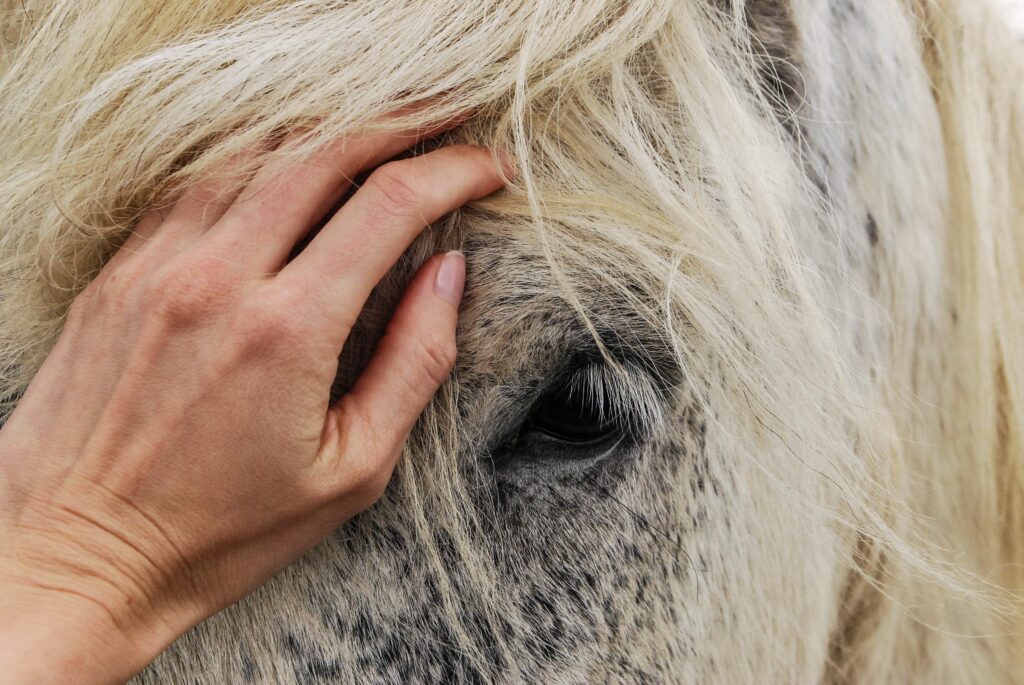Equine therapy, also known as horse-assisted therapy (HAT) or equine-assisted therapy (EAT), is a trending alternative therapy becoming popular in addiction recovery programs. Over the last several decades, researchers have studied the effects of equine therapy on a wide range of mental and physical conditions and have shown a substantial amount of evidence proving it to be a successful therapeutic method. The people who benefit from this form of treatment include:
- Adolescents and young adults
- Individuals who have difficulty connecting to other people or who dislike the talking aspect of traditional psychotherapy
- Trauma survivors
- Veterans, first responders, and people in other stressful careers who have developed post-traumatic stress disorder (PTSD) or other conditions due to job-related distress
- Individuals who have disorders that affect cognition, such as dementia or Alzheimer’s
- Individuals who have difficulty paying attention or focusing on single tasks
- Individuals with physical or mental disabilities
A 2016 qualitative study on the effects of equine-assisted therapy for individuals treated for substance use disorder (SUD) reported many advantages of this form of treatment. One unexpected benefit was the positive impact of working in a horse barn or stable. In the stable environment, “the participants were able to construct a positive self, namely one that is necessary, is accepted, can cope with challenges, and be achieved: more fundamentally, a self that is different from the ‘patient’ receiving treatment for a problem or disease.” There was a noticeable increase in self-confidence and self-efficacy in individuals who participated in equine therapy.
What Is Equine Therapy?
Multiple types of equine therapy can treat physical or psychological disorders and disabilities. If you have completed a rehabilitation program and are looking for therapy options to use during your continuing recovery, then equine therapy is an excellent option. Horses are used as living, caring tools that will teach you how to connect with your emotions while building your confidence. A typical EAT session might include the following:
- Learning to identify and regulate emotions and behaviors by analyzing and discovering parallels between yourself and the horse.
- Gaining self-confidence and self-efficacy through interactions with and caring for the horse.
- You may ride the horse, lead it, feed it, talk to it, and interact with it in other ways as directed by your therapist.
Equine-assisted therapy will vary depending on the mental and physical health status of the participant. There is no need to have a prior history of interacting with horses or other large animals. Your therapist can tailor the session contents to include whatever you are comfortable with, so you may simply interact with the horse without riding it if that is not something you are comfortable with. Research indicates touching or talking with animals like horses is enough to lower stress and stabilize mood disorders.
The Benefits of Equine Therapy
Continuing care, also called aftercare, is the period following your successful rehabilitation treatment and return to your day-to-day life. During this time, you must create a support structure by attending therapy and support groups, socializing with sober peers, and finding ways to incorporate the skills you learned during treatment into your everyday life. Equine therapy is a non-traditional but effective method of aftercare used to enhance the positive effects of other therapies.
One of the primary benefits of equine therapy is that it teaches emotional intelligence and control. One study reported that “emotion regulation appears to provide individuals with a doubled ability to avoid drug relapse and assists with the control of temptation to reuse.” Research has been able to pinpoint specific health benefits of equine-assisted therapy that include its’ ability to:
- Lower blood pressure
- Decrease anxiety and stress levels
- Teach emotional regulation
- Increase mood stability
- Assist with treating mental health disorders including anxiety and depression
How You Use Equine Therapy to Heal
Horses and other animals are a judgment-free source of support, love, and hope. If you treat them with care and affection, they will return the favor. Continuing care during your recovery involves learning to improve self-efficacy and self-confidence to heal and move forward with your life. Equine therapy provides that thanks to the unselfish nature of the horses and the standardized programs that will help you build up your self-esteem.
Is Equine Therapy Right for You?
There are a few points to consider when determining if EAT is a good fit for you, including whether or not your insurance covers the therapy option and how much time you can dedicate to it each week. Unlike traditional therapy offices, it is not unusual for horse stables and ranches to be located slightly outside of town or in the suburbs, which means that there might be a longer commute.
Equine-assisted therapy has become increasingly common as an alternative to traditional psychotherapy. Individuals who have difficulty connecting with other people or talking through their issues may feel more comfortable with this hands-on approach to therapy. You can learn a lot while spending even an hour each week with a horse. You can continue growing by analyzing the horse’s behavior and emotions to better identify your own. Emotion regulation can significantly decrease the effects of cravings and lower the risk of relapse in recovery. You will practice patience, self-control and gain confidence during sessions where you spend time connecting with a specially trained horse. After receiving treatment at a facility like Everlast Recovery Centers, you will need to create a plan for aftercare for your mental and physical well-being. Equine therapy is one option. You can learn more about continuing care and alternative therapies by calling Everlast Recovery Centers at (866) 338-6925.





